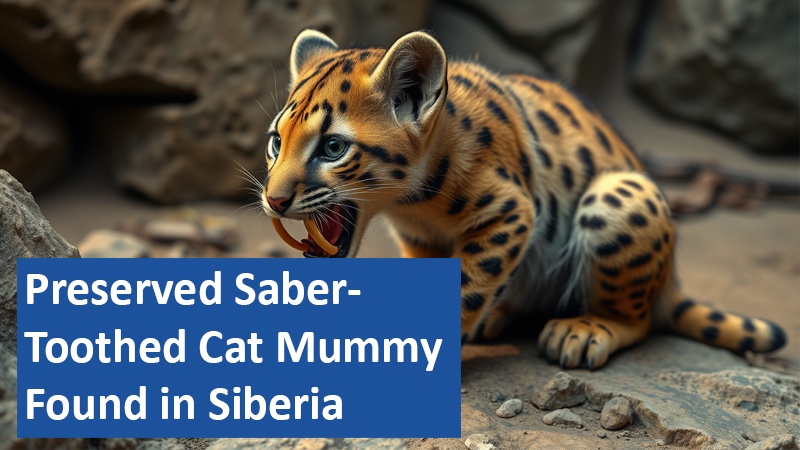A groundbreaking discovery has emerged from Siberian permafrost—a remarkably preserved saber-toothed cat cub from over 30,000 years ago. Encased in ice, the young predator’s remains are so well-kept that even its whiskers remain intact. This finding offers scientists unparalleled insights into the physical traits and adaptations of extinct species.
By Julian James
Discovery in the Permafrost

In 2020, researchers unearthed the remains of a saber-toothed cat near the Badyarikha River in Yakutia, a region above the Arctic Circle. Preserved for millennia in an ice block, the cub belonged to the species Homotherium latidens, often referred to as a saber-toothed tiger. Radiocarbon dating revealed that the animal lived approximately 35,500 to 37,000 years ago during the late Pleistocene. The cub was just three weeks old at the time of its death, offering a unique snapshot of the juvenile stage of this extinct predator.
Remarkable Physical Preservation
The cub’s remains include its head, forelimbs, and partial torso, with features so well-preserved that individual whiskers can still be observed. Researchers also recovered bones from its hind legs and pelvis. These findings allowed scientists to reconstruct the anatomy of Homotherium latidens, providing rare details about the species’ appearance. Compared to modern lion cubs, this ancient predator had shorter ears, a sturdier neck, and a darker, denser coat suited to its cold environment.
Adaptations for Survival
Distinct features, such as broader paws and a wider, shortened nose, suggest adaptations for surviving in snow-covered landscapes. The cub’s muscular forelimbs were notably longer than those of today’s big cats, which likely enhanced its ability to hunt in harsh conditions. These traits, coupled with its thick fur and compact body shape, highlight the evolutionary adaptations necessary for life during the Ice Age. Scientists believe such findings deepen our understanding of the species’ habitat and survival strategies.
Broader Scientific Significance
The discovery not only sheds light on Homotherium latidens, but also enhances knowledge about extinct Ice Age predators. This is the first time the external features of such a species, which has no modern equivalent, have been studied in such detail. The find confirms the presence of this saber-toothed cat species in late Pleistocene Asia, significantly enriching paleontological records.
This discovery highlights the incredible preservation capabilities of permafrost, allowing scientists to study extinct species in unprecedented detail. By analyzing these remains, researchers gain valuable insights into the adaptations and environments of Ice Age predators. Such findings underscore the importance of paleontological research in uncovering the complexities of Earth’s ancient ecosystems.
Based on information from www.fr.de and own research.